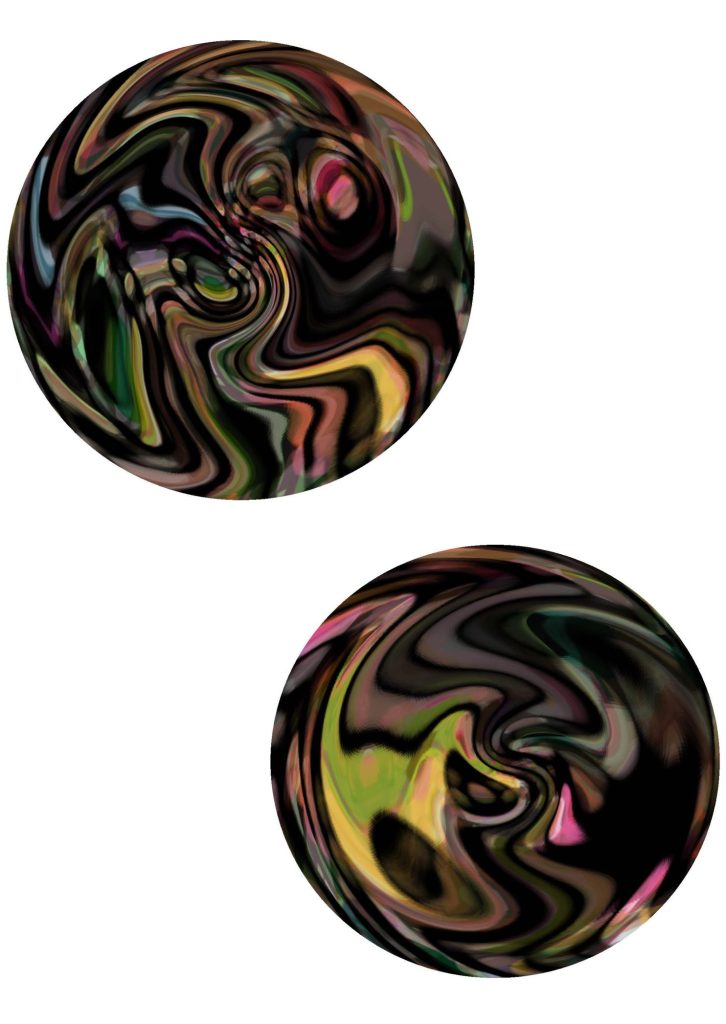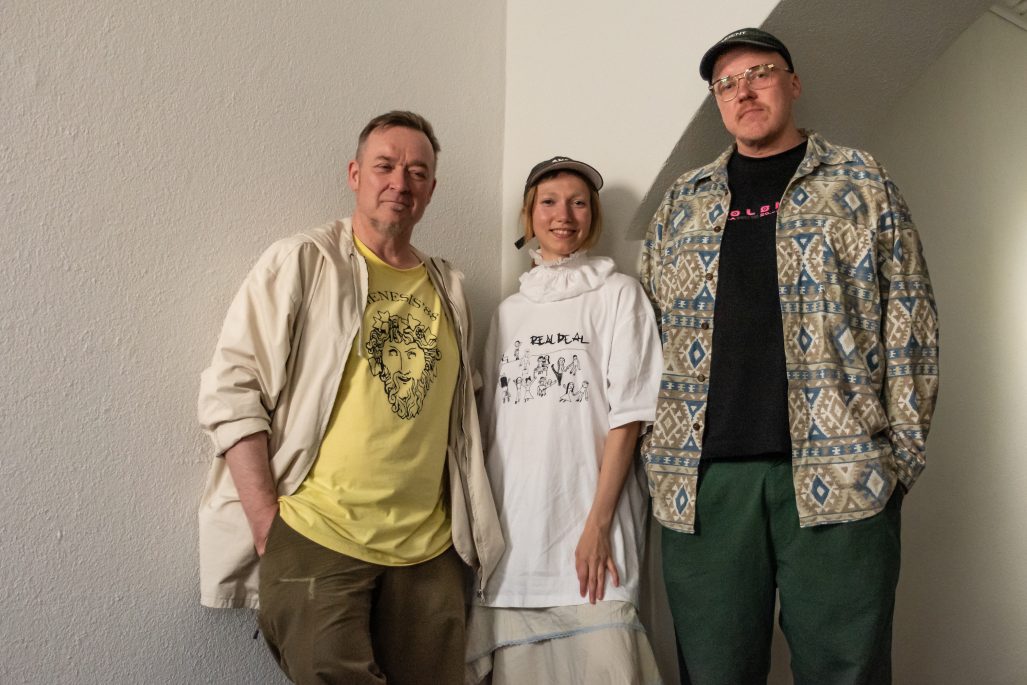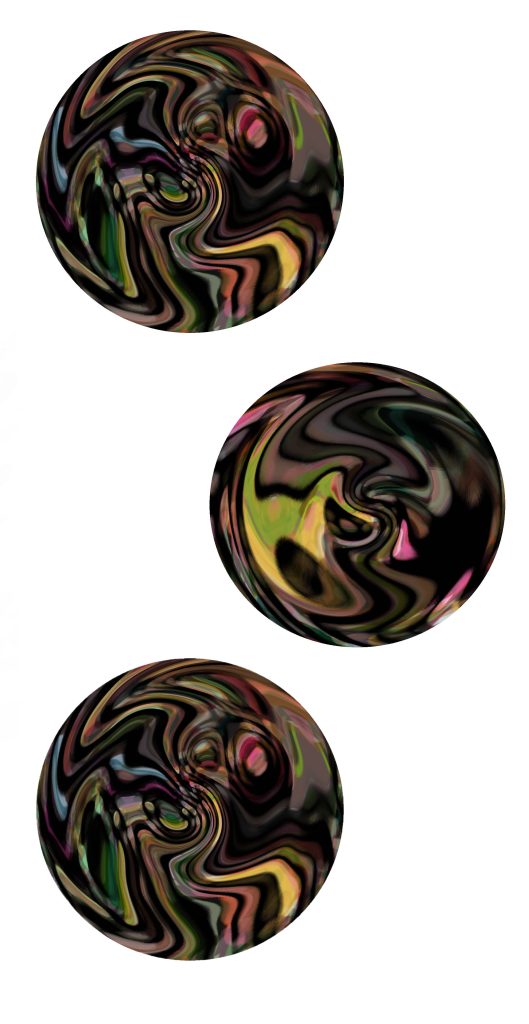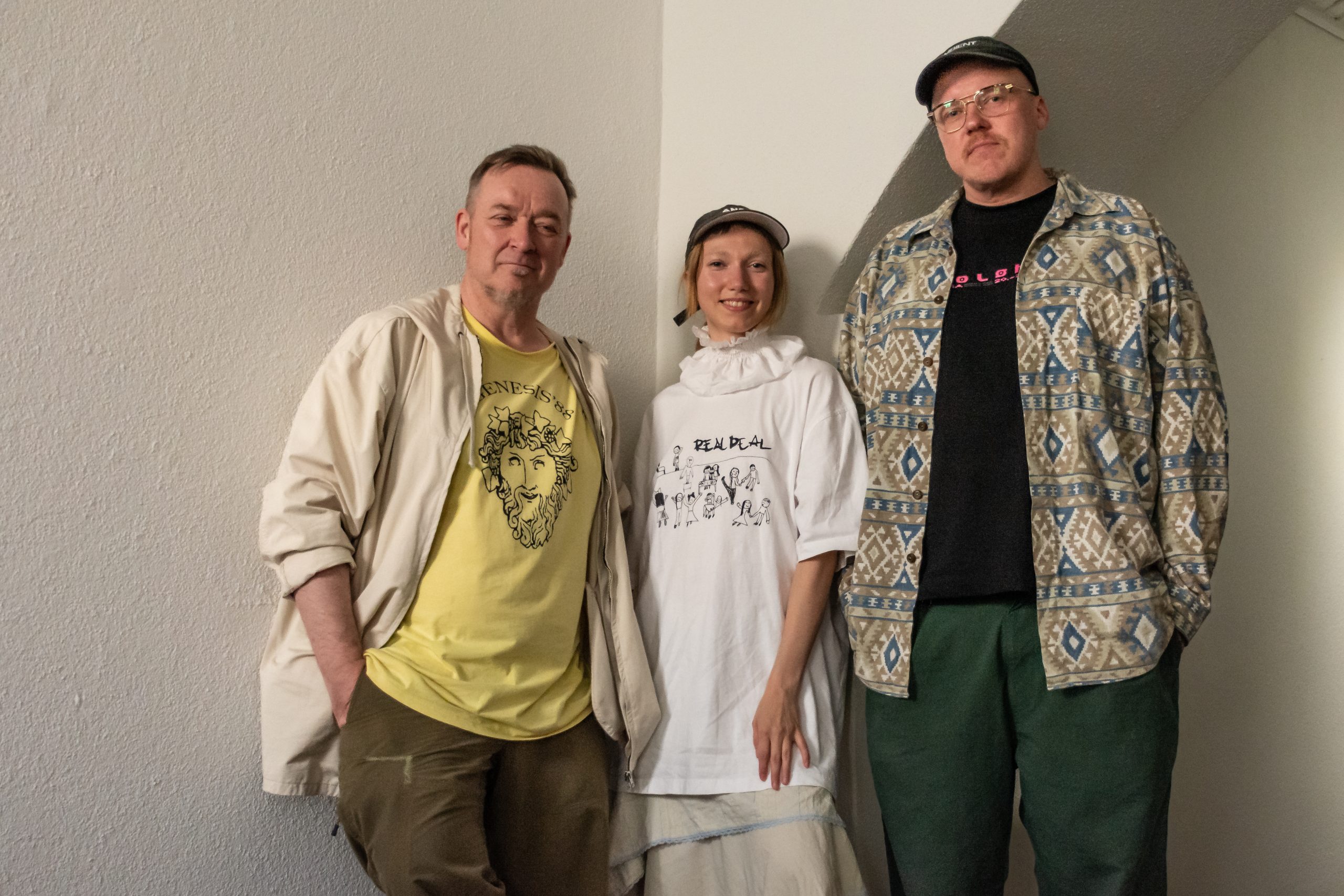Three DJs and party organizers shed some light on Oulu’s underground (ug) scene. The light remains dim, because underground thrives in darkness. But we do catch some glimpses through the veil of secrecy.
Rene Tauriainen is a pioneer of rave culture in Oulu. Juhani Oivo has been throwing various types of parties for 20 years, and Vilma Kallunki is a prominent figure of the younger rave generation.
At raves, DJs and live performers play electronic dance music for a dancing crowd. The music is unified by a varying, aggressive bass and a quick tempo that varies in different styles.
Rave culture was born in the US in the mid-1980s and spread fast to Europe, especially England. The first rave party in Oulu was thrown at the beginning of the 1990s.
Ug, aka underground is something alternative, dubious and non-commercial – perhaps even forbidden and illegal. Some call it a subculture, but the term “ug” has cemented itself in the culture. Something is happening underground or atleast beneath the surface – something secret, perhaps even dangerous.
Underground eludes being defined, because it is constantly evolving. Commercial operators seek the underground for influences, and things are moving towards a more mainstream direction.
Rene Tauriainen ponders on the concept of underground. “Ug strays away from mainstream, but nowadays it can also be commercialized. Commercial night clubs like 45 Special play ug music.”
“Ug parties are held in places other than restaurants, bars or clubs, but the culture is also showcased in those places. The parties are organized for a small, knowledgeable crowd, and they usually require an invitation,” Vilma Kallunki says.
The allure of underground parties is based not only on secrecy and a sense of danger, but also the sense of freedom. The music can be more hardcore, experimental or deeper than in restaurants; there is no last call, and there is less harassment and bad behavior than in restaurants. The information about the parties spreads through the grapevine, these days usually in private chat groups online.
Early beats at warehouse parties
When the first rave parties in Oulu were thrown in the early 90s, Rene Tauriainen was in the middle of it. He was one of the establishers of Oulun Warehouse and H.A.N.D (Have A Nice Day) associations, which operated in secret.. Oulun Warehouse threw parties in empty warehouses and other abandoned spaces, like a closed-down bowling alley.
The only way you could get in was by knowing the right people, and the raves were announced at the last minute through a secret phone line. The Warehouse parties started after midnight and ended sometime in the morning – whenever the organizers so desired.
The inspiration for organizing the parties was “acid house” music that you couldn’t play during DJ sets at restaurants. Disco music and culture had already evolved in England and the US.
“My friends had traveled there, and we read articles in online magazines. The allure was about unconventionality and a sense of danger. Our group of congenial friends decided to start throwing parties in Oulu.”
“Warehouse parties had an estimated 100-150 participants, but the vibe felt more like 15 000. The venues were pitch dark, full of smoke and a lot of strobe lights.”
Information about the illegal parties reached the ears of law enforcement, and the police even ended shutting down one party.

“There were members of the Screaming Men’s Choir present, and the guys performed the Finnish national anthem as the police were clearing out the place,” Tauriainen reminisces amusedly.
The operations of Warehouse Ry ended in the late 90s. There was a rising moral panic spreading through Europe concerning illegal parties where criminals were rumored to be doing drugs. In many countries law enforcement cracked down heavily on the parties. Compared to that, the police in Oulu took a more lenient approach.
“We were throwing a party and happened to be standing outside with the other organizers. The chief of police arrived at the scene and told us “listen guys, I know you’re having a party downstairs and I’ll look the other way this one time, but the next time there will be consequences. Could you please make your operations more official?””
“After that we had to rethink our approach; after all, organizing those parties was really tough in hindsight,” Taurianen sums it up.
New beats emerge from silence
Rave culture has gone through a resurrection in the past few years. People are talking about a renaissance and a third wave: the second wave was EDM and eurodance, which are not often associated with credible subculture.
In the parties, new artists and experiences are thriving. During the summer, people party in the forests and on the beaches of Helsinki almost every weekend. Clubs and large venues host more commercial parties, and raves have become a largely accepted part of mainstream culture.
Vilma Kallunki is known as DJ Otilia, and she’s thrown gigs both in Finland and abroad. Kallunki is a part of the multi-artistic collective Cultish, which organizes parties and various events that combine video art, installations and electronic music.
Kallunki notes that nowadays there are a lot of people actively organizing various interesting events. After covid, many new people have entered the scene; party culture lives and is thriving.
Rene Tauriainen agrees.
“At one point it felt like there was nothing worthwhile going on, but what I’ve seen lately is looking good again.”

Juhani Oivo has worked as a DJ and an event organizer in the electronic music scene for over 20 years. Oivo has organized hundreds of events and spins records under the names of DJ Oivo, DJ J Honey and DJ Jay Day. Nowadays he organizes events like Elektorni during the summer at Tähtitorni in Oulu’s Linnansaari and during the winter at 45 Special.
From an outsider’s perspective, it seems like the electronic music scene in Oulu is personified in Oivo. However, he does not endorse this idea, even though Tauriainen believes that at one point, Oivo was the only active organizer in the area.
“I fully disagree. All of this is by no means all on my shoulders. Sure, at one point there were less events happening in Oulu, but nowadays there are lots of active organizers.”
“It was a bit quieter from 2000-2015, and many people didn’t attend the parties. But even during that time, there was fluctuation. The location of Oulu also plays a key role in all of it: the city is not a huge metropolis, and young people tend to move south.”
Oulu has style
New electronic music collectives have been established all over Finland.
Oivo notes that the rise in popularity has been evident in Oulu during the past 5-10 years as well. Vilma Kallunki agrees.
“We’ve been organizing club events with Cultish for four years now, and even during that time the scene has evolved a lot,” Kallunki amplifies. Kallunki says that there has been demand for both open and underground events organized by Cultish: the combination of music and visuals clearly appeals to their audience. Events organized by Cultish carry a recognizable visual style. The music is rooted in techno, but varies according to the venue and the theme of the party.
The scene is evolving in many ways in various different directions, and the artists draw influences from other subcultures without prejudice. The style of rave music varies from city to city: Oivo mentions that traditionally a lot of music from the UK has been played in Oulu. Many DJs have embraced the British sound, and Oivo’s club night, Children of Boom, featured UK music heavily.
“There’s a certain continuity here; it’s one of the defining characteristics of the Oulu sound. Then again, the UK sound is currently gaining a lot of traction across other parts of Europe,” he adds. “Back in the 90s, the music was predominantly European, especially British,” Tauriainen notes.
Where’s the party?
Where and what kind of underground parties are organized in Oulu? The organizers exchange long looks, and there is a long silence. Finally, Tauriainen responds: “Let’s just say that they exist.”
They wouldn’t be underground raves if they were public. The venues and locations remain secret. They do, however, share that several open-air parties are held in the forests around Oulu during the summer.
The organizers quickly and smoothly shift the topic to more public events. Kallunki tells that public parties are held at Nelivitonen (45 Special) and Kulttuurilaboratorio. He recalls a particularly memorable event: the pride-themed party thrown by Cultish a few years back.
Oivo says that it’s really nice to play at Elektorni, and it’s an open-air party since it’s not indoors but under the starry sky. Tauriainen also remembers that the first Time Tunnel at Valvesali was an extremely impressive experience.
There’s no point in asking more about the locations or nature of underground parties. They do happen, though.
Wild partying?

The party organizers feel most at home at small, underground parties, but huge festivals with tens of thousands people have their moments, as well. Tauriainen says that squat parties in abandoned houses in London are wild. “Once you leave, you can definitely say that you’ve experienced something.”
“I’ve been to some parties in London that, whew, I wouldn’t even talk about them out loud. At squat parties, homeless people sleep in the corners, junkies shoot up, and there’s insane drum’n’bass blasting. People party like crazy, sometimes until who knows when,” Tauriainen says, adding that the parties are not specifically drug-fueled parties, but it is one way to party.
Squat parties in London are a far cry from the reality of a small, northern city; but since the parties are secret, there are a lot of rumors circulating about them – some of which are not entirely true.
The organizers unanimously agree that drugs always come up in the conversations, even though in their experience people are more inebriated in bars. They all emphasize that people come to raves for the music.
And while drugs, particularly MDMA (aka ecstasy) are a part of rave culture and visible in the imagery and in dilated pupils, it’s not a topic the organizers like to discuss. Drugs make for sensational headlines and are an enticing subject, which often leads to exaggerated focus on them in the media. Similarly, the essence of Finnish rock music isn’t defined by flat beer.
“I want to keep drugs separate from the music and the events. It’s none of my business if someone uses before coming to a party. It’s a whole different matter if it turns into problematic use – that’s something that needs to be addressed,” Tauriainen emphasizes.
Vilma Kallunki emphasizes the importance of the principles of a safe space. Raves have unwritten rules and a code of conduct that people follow. Everyone is welcomed as they are. It’s forbidden – or atleast impolite – to film the party-goers, and people treat each other with respect.
Kallunki says that the freedom to express oneself in a non-judgemental environment is remarkable. For her, clothing is an important form of self-expression. Fantasy costumes and jeans with a T-shirt are both equally welcome.
It’s also an advantage that all the participants are somewhat like-minded. When everyone has a sense of what they’re getting into, the risk of conflicts is smaller compared to in bars, for example.
Kallunki says that she’s experienced significantly less bad behavior and harassment at underground parties than in restaurants or public parties.
“Fortunately, nowadays there are written rules that are shared with party-goers in advance and are displayed at the venue. People need to commit to them if they want to attend the party. This way, we can address any issues that arise,” Kallunki notes.
I want to party too!
What should you do if you want to party at an exclusive event? The organizers of underground parties say that it’s relatively easy to gain access to ug parties in Oulu. A step in the right direction is to attend the public parties, such as Elektorni, where you can meet like-minded people.
“Like the saying goes, those who ask will not get lost. References are not necessary, but there needs to be a certain level of familiarity for you to receive an invitation,” Tauriainen explains.
“It’s good to know someone from the scene or to be aware of other parties. In Oulu, the scene is quite open. If you’re interested in the music scene, you’ll definitely find your way in,” Kallunki says.
Raves will take you on a journey
What inspires people to organize raves and gather together to dance till the early hours of the morning? Do the music, the community, the exclusivity, the mystery, drugs and aesthetics explain it all?
Underground parties are organized with a DIY mindset and money doesn’t play a significant role in the events. The organizers emphasize that for them, hosting parties is, and always has been, about the fun and love of music.
Or, it can also be about the fact that at their best, raves can be a mystic experience:
The movement to the repetitive rhythm is ceaseless. The music, lights and smoke hit your body and all your senses with tremendous force. You are the person or entity you want to be at that moment. You’re free.
The experience can be primitive, almost shamanistic; the soul momentarily transcends this world. And while the experience can be enhanced, you can also enter another dimension without the aid of any shamanic substances. For a brief moment everyone is alone, yet simultaneously connected to one another and the universe.
Translation by Anna Tiira.


